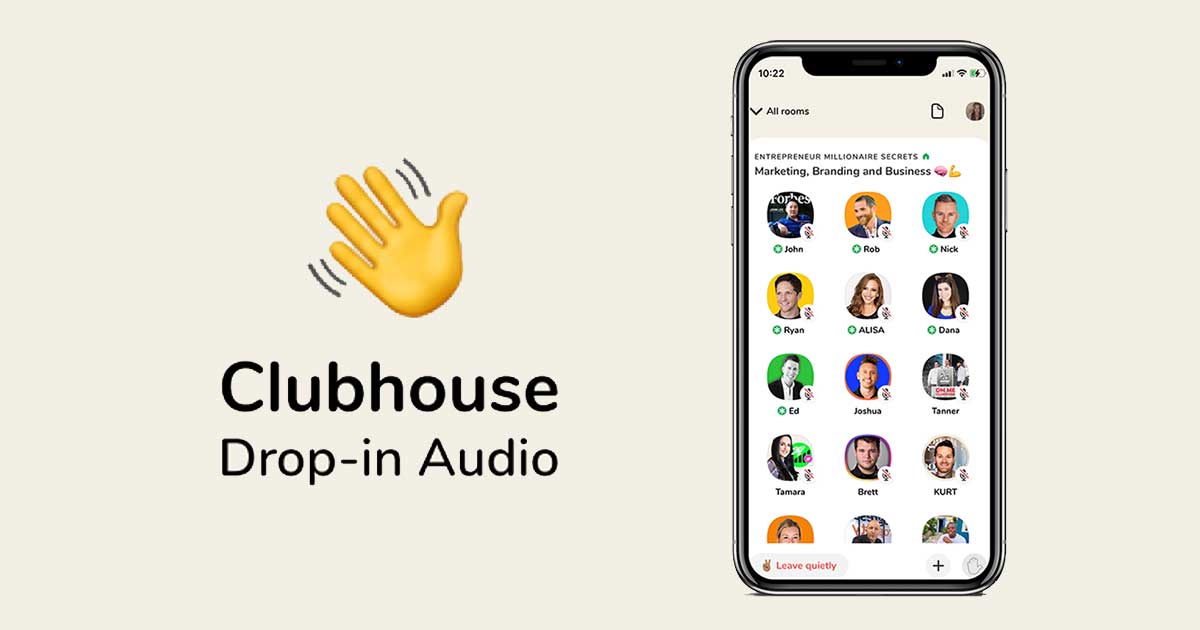What is Clubhouse?
A new audio-only app making waves in the world of social media.
If you’re an audio person who connects and learns through the power of voice then Clubhouse is for you. Entirely audio, Clubhouse allows you to dip in and out ‘rooms’ where hosts talk about varied topics to eager audiences.
How is it different from podcasting, I hear you ask.
Here are my thoughts. Listening to a podcast puts you in an active listening state where you’re absorbing a one-way conversation. The speaker is educating you on an aspect of a topic that you have an interest in. Generally as an ‘on demand’ show, most podcasts are pre-meditated, recorded and made available for you to listen at a time that suits you. I love podcasts – they are a brilliant way of absorbing information. However it’s one-way traffic where you do not participate beyond listening.
In contrast, Clubhouse is a space where you can join a room and either listen to the conversation and/or ask to join the stage. When on stage, you can ask a question and participate in the discussion. It becomes a dialogue between you and sometimes hundreds of people in a room. This is why Clubhouse is framed as ‘social audio’.
Is Clubhouse a threat to podcasts?
Many people are excited about Clubhouse and some believe it’s success will have a detrimental effect on podcasts. Personally, I don’t think it will as Clubhouse and podcasting serve two different purposes for different audience preferences.
As mentioned earlier, podcasts are ‘on demand’ shows where creators spend a lot of time and effort curating their content. There are topic schedules where research and insights are thoughtfully weaved into the narrative. There is also the deliberate addition of music and sound effects that stir emotions and imagination. All of which is pre-selected to ensure the highest quality audio experience.
In Clubhouse much of this is lacking as rooms are live. The experience you have on the app really does depend on the rooms you choose to enter. Like with most things in life, some rooms are better than others.
The possible advantage Clubhouse has over podcasting is that it does allow two-way dialogue between you (the listener) and the room speakers/moderators. When invited to the stage, you now become part of the dynamics of the room. If you are asked a question or are invited to give an opinion piece, you suddenly become the central player in that discussion.
With that said, I still don’t believe that Clubhouse will limit the demand for podcasting. Many Clubhouse rooms can suck you into the app for hours on end as you listen intently for golden nuggets. Often, you feel reluctant to leave a room as FOMO (Fear of missing out) kicks in as your ponder whether you’ll miss something insightful if you decide to ‘leave quietly’ now rather than later. Also, if you don’t find interesting rooms, you’ll end up listening to people who like the sound of their own voice far too much.
Podcasting, in contrast, tells you in advance what you’re likely to take away in exchange for a set amount of time – which is definitely helpful if you’re prone to busy schedules or distraction procrastination.
Podcasts are also recorded (Clubhouse isn’t) so you can pause, rewind and take your time absorbing the content. And, the delivery of information in a podcast is generally of a higher quality as it’s not dependant on live speaker variables and a largely unknown audience.
Once the Clubhouse honeymoon period has passed, I believe podcasting and Clubhouse will live together harmoniously. Why? They serve two different purposes and there is a plausible market for both types of audio experience. So podcasters, please don’t give up.
Not another platform! Is it worth the time and effort?
I hear you! Clubhouse is yet another social platform to learn. However, persevere if you can as I believe it’s worth your time and effort.
Clubhouse gives ‘unknown people’ a voice and the potential to reach many people. And by ‘unknown’, I mean talented people who have lots of great things to share but haven’t yet found the medium in which to do so. As a Clubhouse member, you can host your own rooms, join others and generally pick and choose the topics you are interested in which can lead to a whole host of speaking and listening opportunities. If you find the right rooms, the whole Clubhouse experience is educational, informative and useful.
The best Clubhouse experience
I have actively listened in rooms where I’ve picked up new insights, connections and helpful tips that I can share with others. I find lots of value here as you I can be in a group of hundreds of people, all of whom could have something brilliant to contribute. In pre-pandemic and Clubhouse times, I would pay hundreds of pounds to be privy to these keynote speakers at big industry-led events. At the moment, I can listen in for free and have similar information take-aways.
The not so good Clubhouse experience
Be aware that there are many dubious rooms as there are good rooms. For example, supposed self-starters and entrepreneurs who promise seven-figure earnings but only if you head their words or do it their way. It’s mostly terrible advice where I’ve been told that running a business is easy and overnight success is only moments away. We all know it’s not. It takes graft, effort, an agile business strategy and calculated risk taking.
If I find myself in one of these rooms – I take what is said with a pinch of salt or leave immediately. Some of the advice I’ve heard is total nonsense and sadly gives listeners a map without a compass.
How do I get onto the app?
Clubhouse operates an invite-only policy as it is still in beta (test mode). So you need someone to send you an invitation. You can download the app and register your interest – you’re account won’t fo live though until you receive an invitation to complete the registration process. Also to complicate matters further, Clubhouse is only available to iPhone users running iOS 13.0 or later.
For Android users, the FOMO (fear of missing out) is real. There is a workaround, however. If you have an iPad, you can use this device to download the app and use the app.
New users have one invitation to give to another when they join. Therefore, you need to make colleagues and friends are aware of your intention to join Clubhouse so they can pass their invitation onto you.
You’re in, what should you do first?
Once you’re in, the first thing to do is create your profile. You’ll need your name, a username, bio and a profile picture. Take some time completing your bio. Think about what you want listeners to know you for. The search function in Clubhouse uses the keywords you use them in your username and bio to help others find you. Plus be descriptive. Most people tell detailed stories that outline their scope of work, achievements, areas of expertise and interests to attract the right kind of followers.
Getting the most from Clubhouse
Now that you are a Clubhouse member, it’s important to have a strategy in place for getting the most from your time on the app. Here is my checklist, outlining key tasks you should complete:
-
Follow people you think you will learn something from; industry experts, colleagues and mentors
- Tell people your are on the app so that they can follow you
- Choose your interests. Consider this carefully as room suggestions are dependent on what you’ve ticked here
- Look out for scheduled rooms so you catch your favourite speakers
- Complete your bio as mentioned above. Don’t skip this step.
- Link your profile to Instagram or Twitter. There is chat box in Clubhouse so you have to take non-speaking conversations across to Instagram or Twitter
- Host a room. If you are nervous, link up with colleagues and host a room between you. And as always, offer value-laden, informative room topics rather than going in for any form of hard selling.
Getting the most from Clubhouse
After some time on the app, you will find clubs and people that you will regularly like to tune into. In such instances, you can ask Clubhouse to notify when that speakers room goes live. Be careful though. When you click on a notification, you are whizzed into the room immediately often leaving you disorientated and thinking ‘oh no – I didn’t mean to do that’. Fine if you want to be there. Not so good if you are taken by surprise. If you didn’t mean to be there, you can often leave unnoticed if it’s a big room. If it’s a room with a small audience, it is tricky to leave discretely without being noticed and called out as a new participant. You can turn notifications off but you have to have some sort of calendar in place if you want to catch certain people.
I hope you’ve found this introduction to Clubhouse useful. Enjoy using the app! If you are a regular user of Clubhouse, share your thoughts by leaving a comment below. Thanks for reading.
Say hello

Sarah Hackett
Agency Owner / CMO
Sarah Hackett is from Staffordshire in the United Kingdom. Since 1998, she has worked in marketing both client and agency side developing branding and marketing strategy. Sarah has a curious mind and always looks to implement tactical marketing that is founded on best practice, customer centricity and sound business planning. Connect with her on Clubhouse using @sarahhackett





